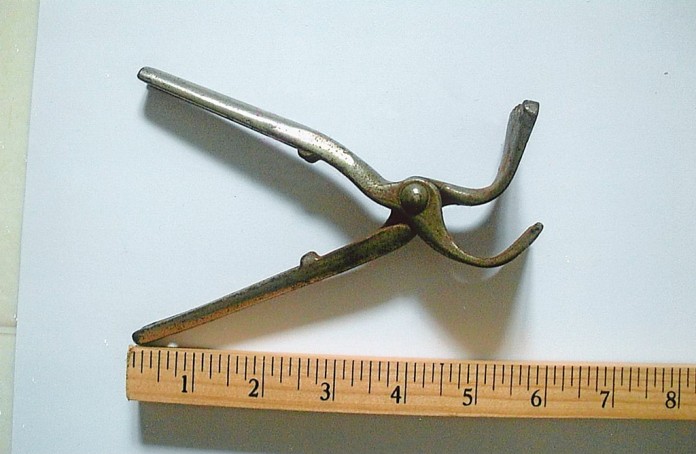Our new item comes from Dick Kind, of Slippery Rock, Pennsylvania. We’re showing two photos of different angles. There are no markings on the tool, which the Kinds found in a shed on their farm and don’t know how it was used. There is a 3/8-inch hole located a half inch from the end, on the bottom side.
Well, fearless readers, what do you say it is?
Email responses to editorial@farmanddairy.com; or respond by mail to: Hazard a Guess, c/o Farm and Dairy, P.O. Box 38, Salem, OH 44460.
Well, Ralph Farnsworth, of New Haven, Vermont, sent us a fun Hazard-ous item, Item No. 1054, which we’ve shown the past two weeks.
And, while it looks very much like a continuous candle wick (which are still available today), it actually has a very specific purpose: It’s a “wax jack,” or “horizontal jack,” used to heat wax to seal envelopes.
Sealing wax was sold in sticks, but had no wicks, so you needed something to melt the wax to make the seal.
Collector Kent Murray, of Ashland, Ohio, enlightened us. Most jacks were developed and used in the 1700s through the early 1900s, and were desk accessories used to seal letters with wax. The jacks could be very plain and simple, or ornate silver stands.
The fiber wick wound around the spindle and was often coated with turpentine to retain its flexibility and reduce the beeswax cracking. It was held upright by some form of clip or scissor at the top, which held the wick so tightly that it would prevent the wick from burning down below that level. The wax jack flame was small but perfect for melting the end of a stick of sealing wax.
Thanks, Kent, for your insight! Who knew?!















